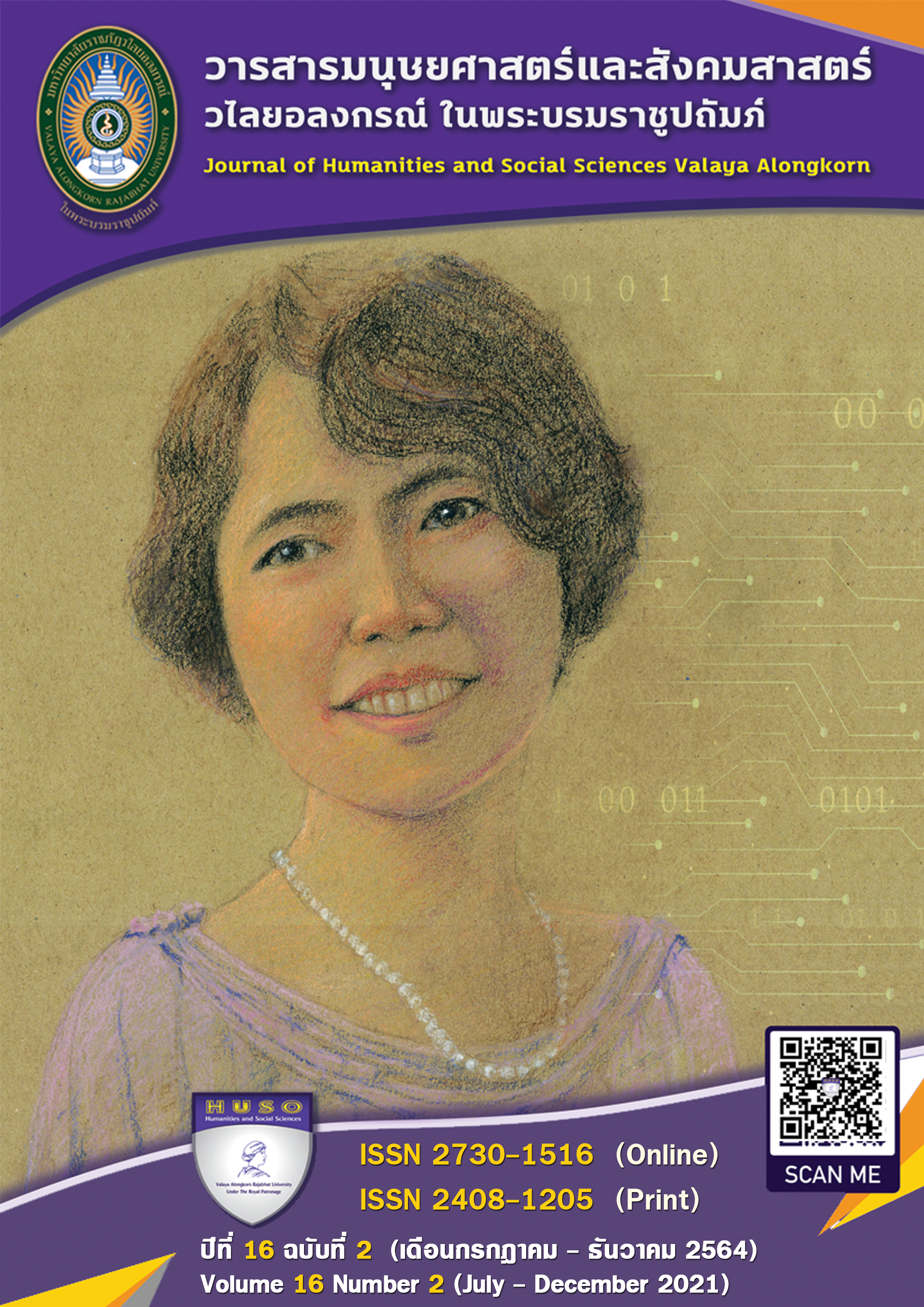THE ANALYSIS OF REFERENCES APPEARING IN MADANABADHA
Main Article Content
Abstract
ABSTRACT
This research aims to study the strategies of reference theory in Thai literature – Madanabadha. To complete this research, the researcher used applied research through document analysis and presented the findings in a form of descriptive research. The references that appeared in Madanabadha use Chanawangsa's style reference theory which can be divided into 3 types: Pronominal Reference, using the first, second, and third person pronouns or character name – including the selection of words to refer to the character's gender, status, rank or position, as well as the context of the story. Indicative Reference (Demonstrative Reference), words with indicative references are found to be a few. The words found are ‘this person’, ‘this man’ and ‘this woman’ which appeared after the Pronominal and Comparative References. Lastly, Comparative Reference, of which the author will use contextual comparison methods of the character's rank, position or status in selecting words to compare, including the mood of the characters while still allowing the reader to understand the allegorical reference claims to whom.
Article Details
ลิขสิทธิ์บทความวิจัยที่ได้รับการตีพิมพ์เผยแพร่ในวารสารมนุษยศาสตร์และสังคมศาสตร์ วไลยอลงกรณ์ ในพระบรมราชูปถัมภ์ ถือเป็นกรรมสิทธิ์ของคณะมนุษยศาสตร์และสังคมศาสตร์ มหาวิทยาลัยราชภัฏวไลยอลงกรณ์ ในพระบรมราชูปถัมภ์ ห้ามนำข้อความทั้งหมดหรือบางส่วนไปพิมพ์ซ้ำ เว้นแต่จะได้รับอนุญาตจากมหาวิทยาลัยเป็นลายลักษณ์อักษร
ความรับผิดชอบ เนื้อหาต้นฉบับที่ปรากฏในวารสารมนุษยศาสตร์และสังคมศาสตร์ วไลยอลงกรณ์ ในพระบรมราชูปถัมภ์ เป็นความรับผิดชอบของผู้นิพนธ์บทความหรือผู้เขียนเอง ทั้งนี้ไม่รวมความผิดพลาดอันเกิดจากเทคนิคการพิมพ์
References
ชนกพร อังคุศุวิริยะ. (2559.) การอ้างถึงที่ปรากฏในหนังสือหลักราชการพระบาทสมเด็จพระมงกุฎเกล้าเจ้าอยู่หัว. วารสารวิชาการมนุษยศาสตร์และสังคมศาสตร์ มหาวิทยาลัยบูรพา. 24(44).
มงกุฎเกล้าเจ้าอยู่หัว, พระบาทสมเด็จพระ. (2503). พระราชนิพนธ์ละครพูดคำฉันท์เรื่องมัทนะพาธา. คณะกรรมการมูลนิธิพระบรมราชานุสรณ์พระบาทสมเด็จพระมงกุฏเกล้าเจ้าอยู่หัว. [ม.ป.ท.: ม.ป.พ.,]
Chanawangsa, W. (1986). Cohesion in Thai. Ph.D. dissertation. Washington, DC: Georgetown University.
Angsuviriya. C. (2016). Referencing in King Rama VI's Book of Governing Principles. Academic Journal of Humanities and Social Sciences Burapha University. 24(44).
Fiske, J. (1996). Media Matters: Race and Gender in U.S.Politics. Minneapoli: University of Minnesota Press.
Fowler, R. (1991). Language in the News. London: Routledge. Halliday, M.A.K. and Hasan, R. (1976). Cohesion in English. London: Longman. Jakobson, R. (1960). “Linguistics and Poetics: Closing Statement”. Style in Language. Cambridge, M.A.: MIT Press.
King Rama VI. (1983). Madanabadha. Bangkok: Board of Directors of the King Rama VI Foundation. (In Thai). Kress, G. (1985) “Ideological Structures in Discourse”. In Van Dijk, T. (ed.) (1985) Handbook of Discourse Analysis, Vol. 4: Discourse Analysis in Society. London: Academic Press, (pp. 27-42).
Olshtain, E. and Murcia, M. (2004). Discourse and Context in Language Teaching: A Guide for Language Teachers. Cambridge: Cambridge University Press.
Paltridge, B. (2006). Discourse Analysis: An Introduction. 2nd Edition. Sydney: Continuum. Sriyaphai, W. (2013). Thai linguistics. Nonthaburi: Sammachanya.


